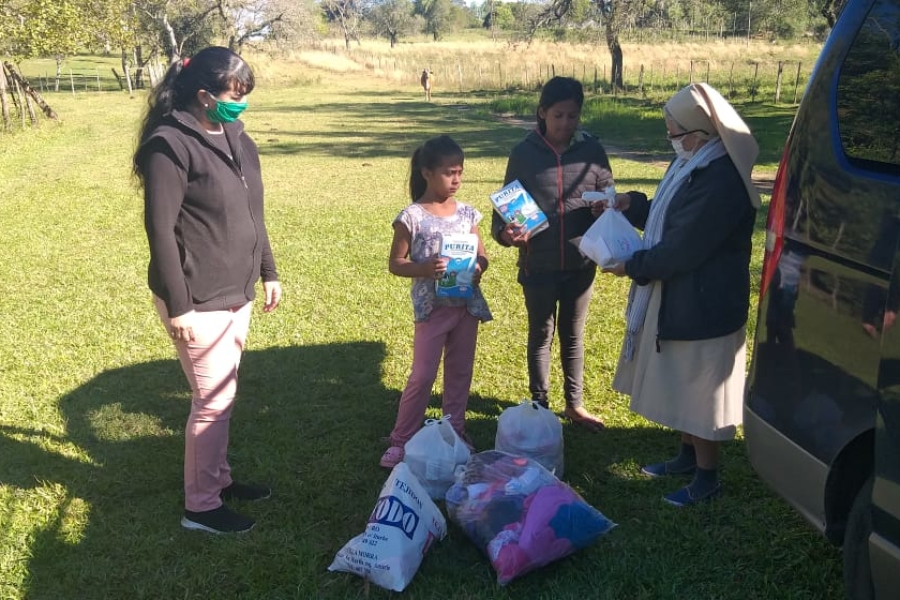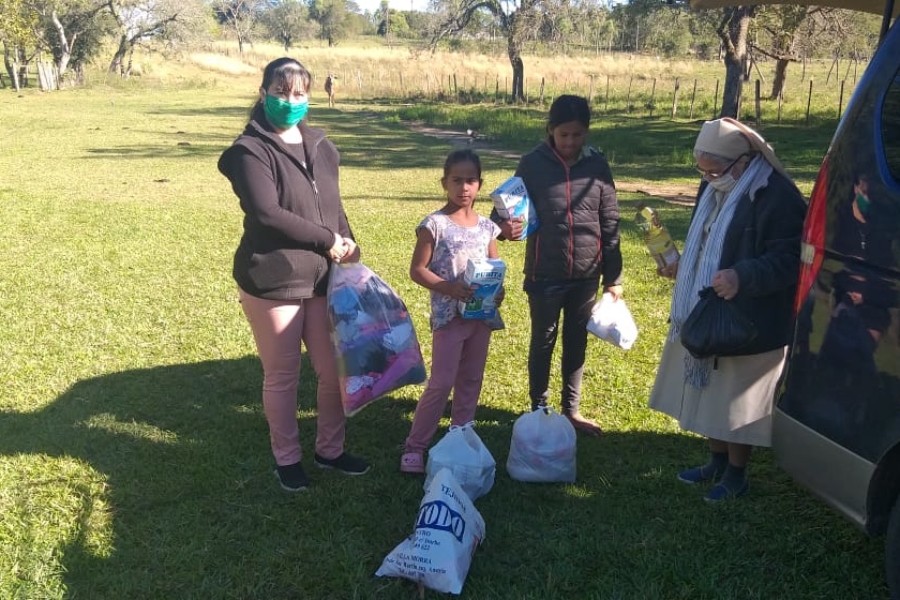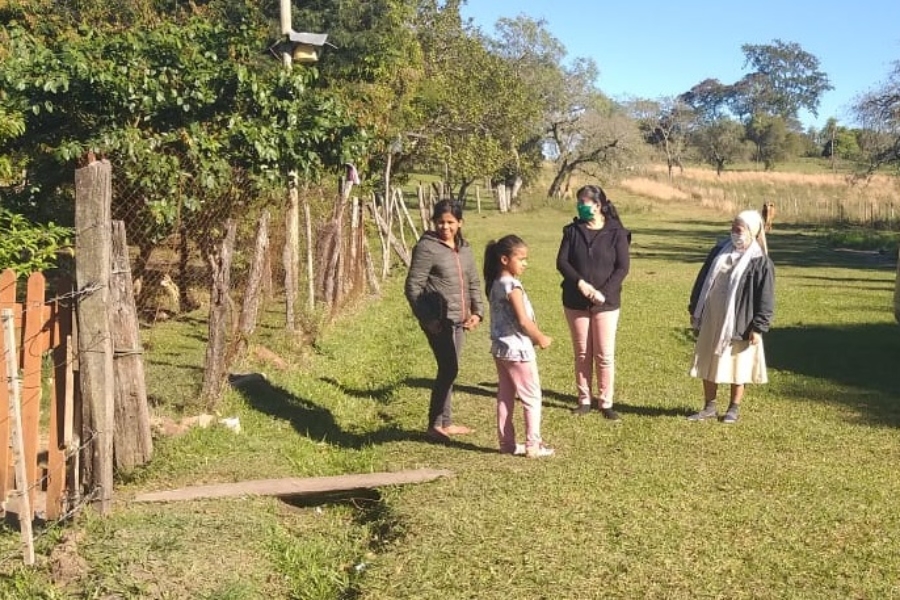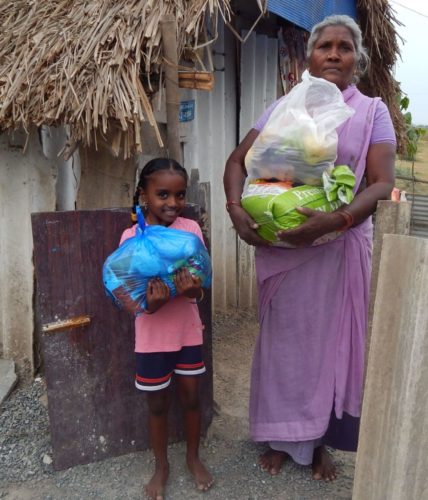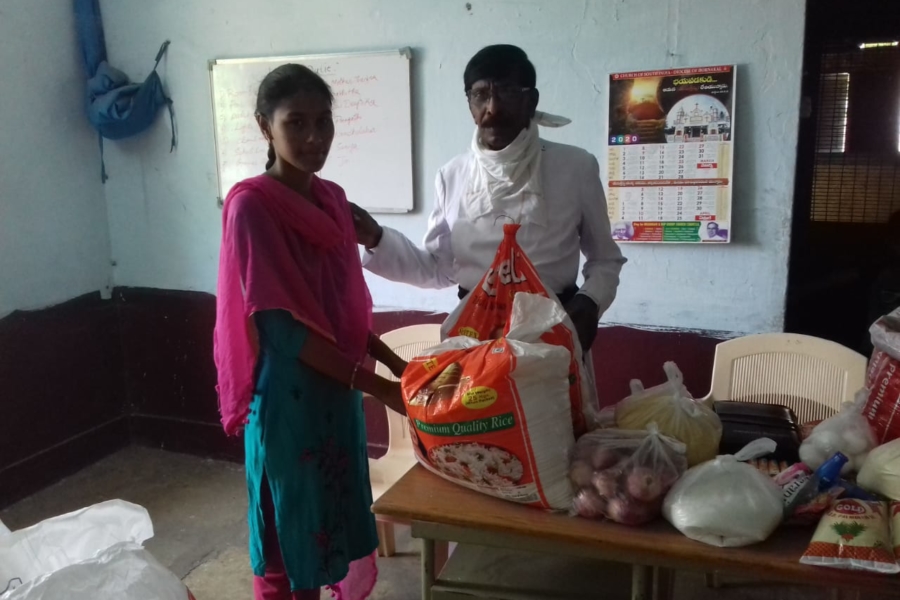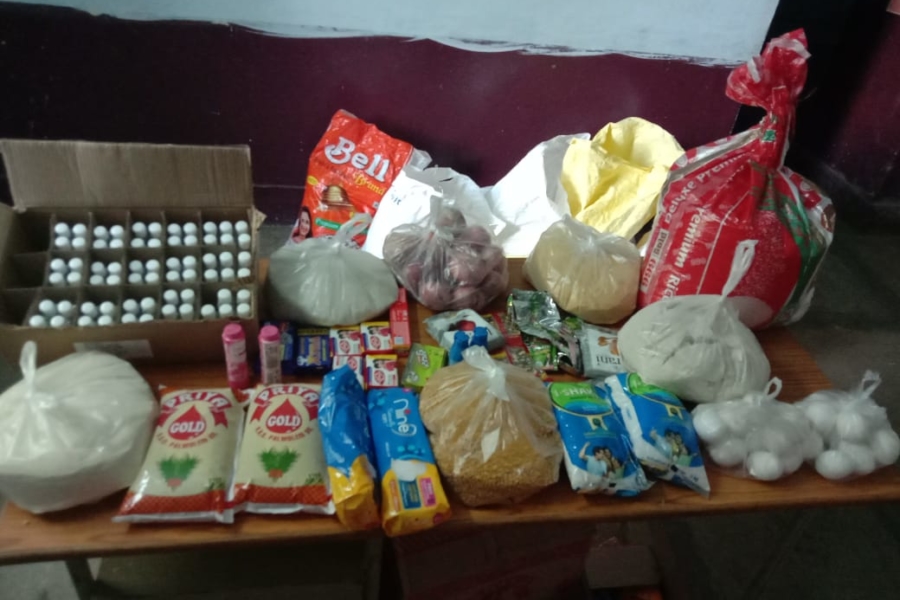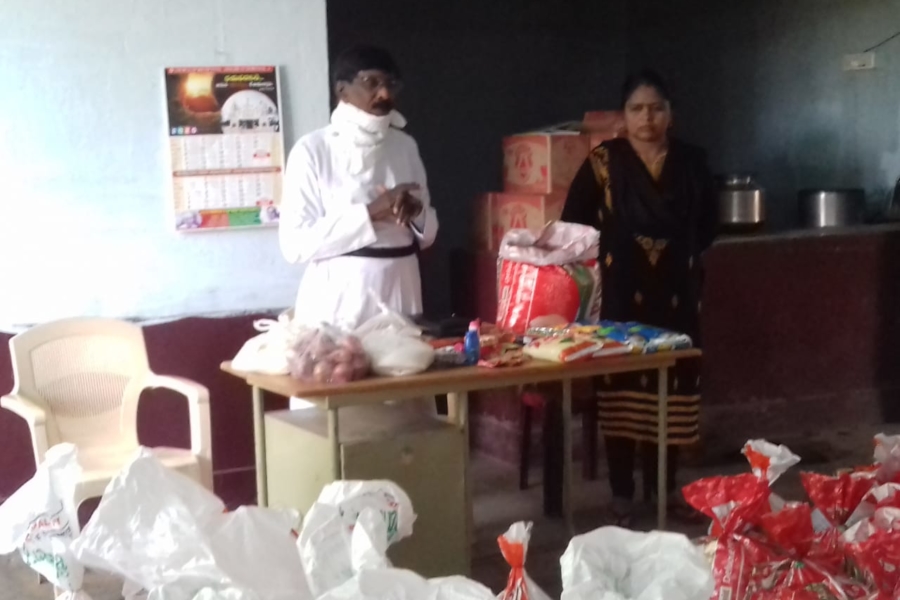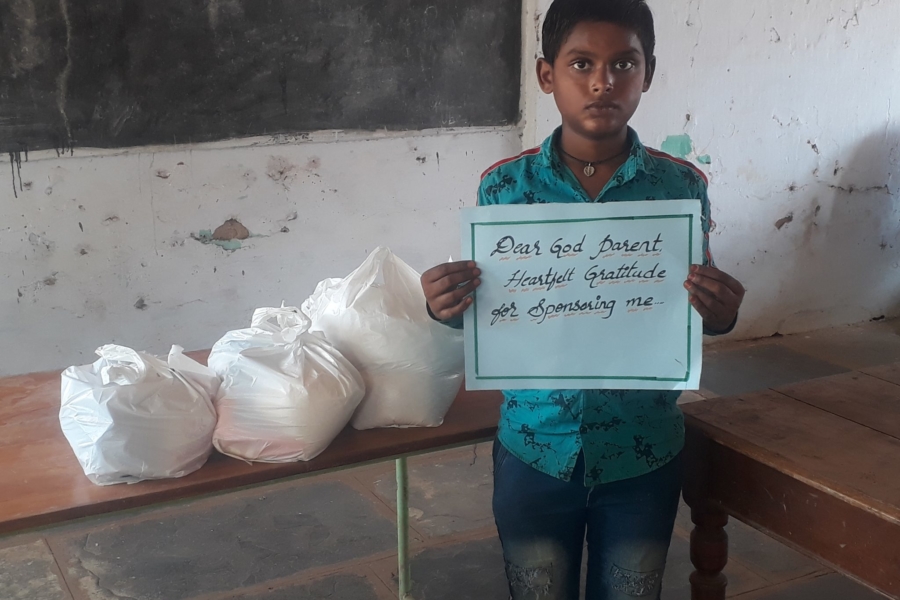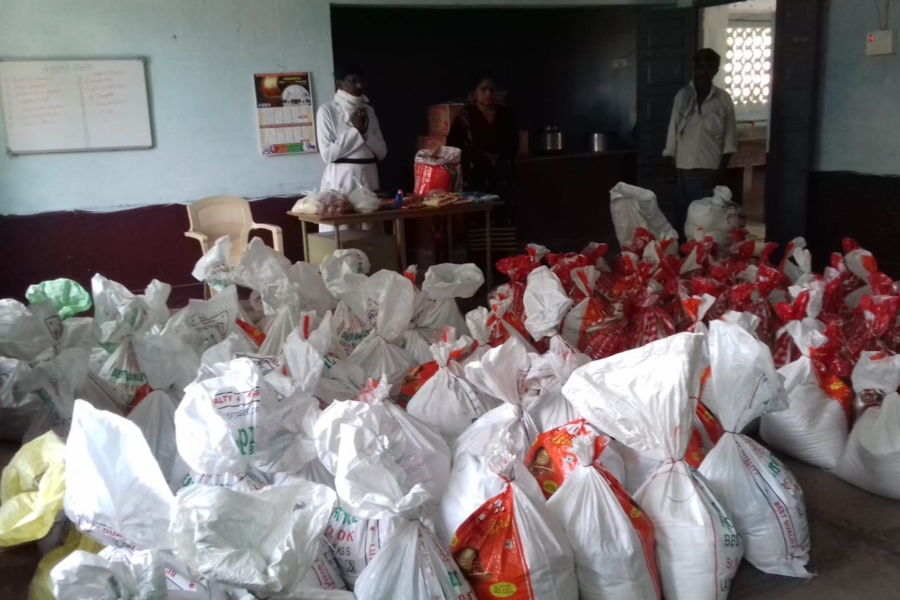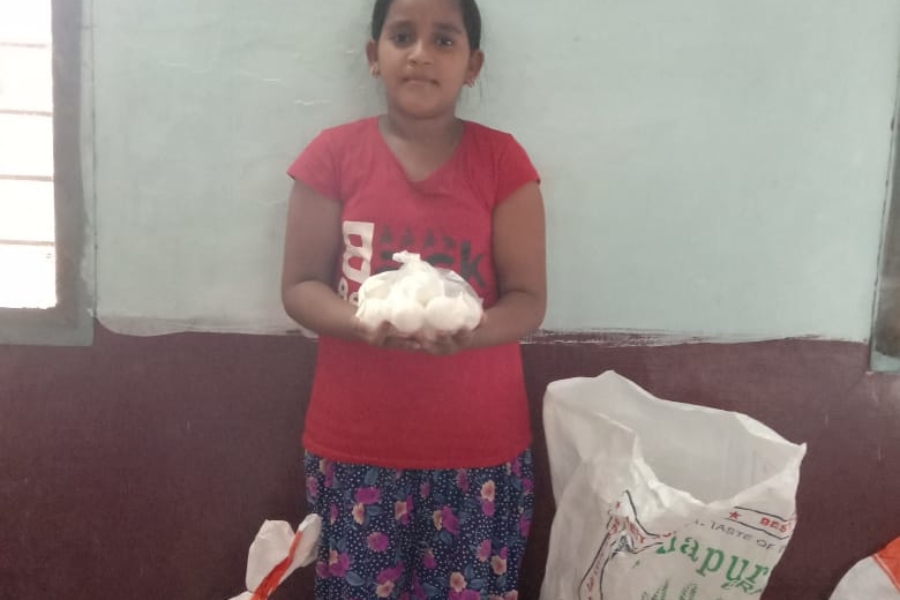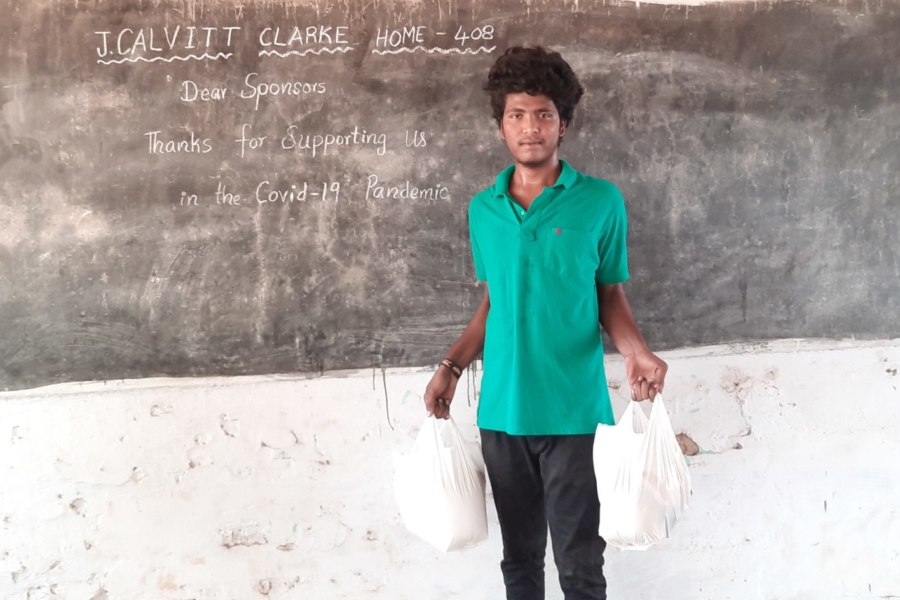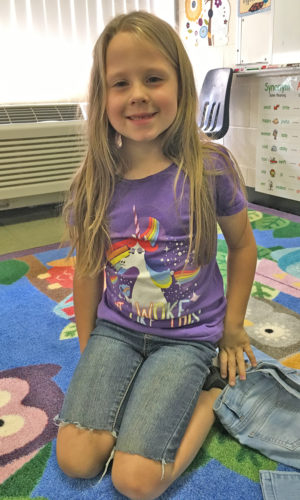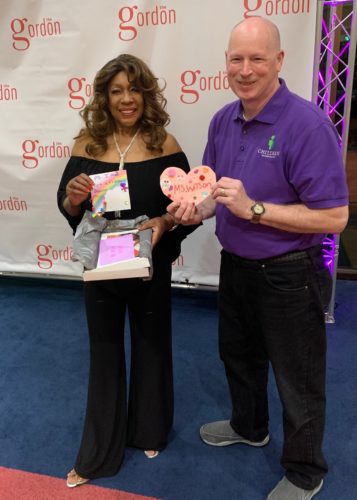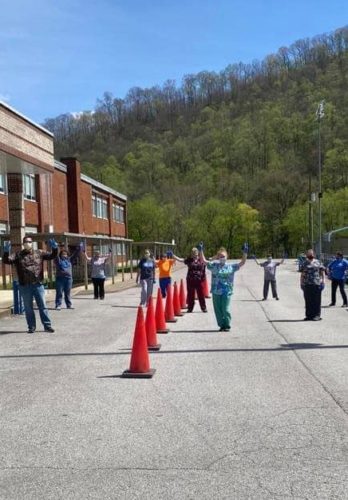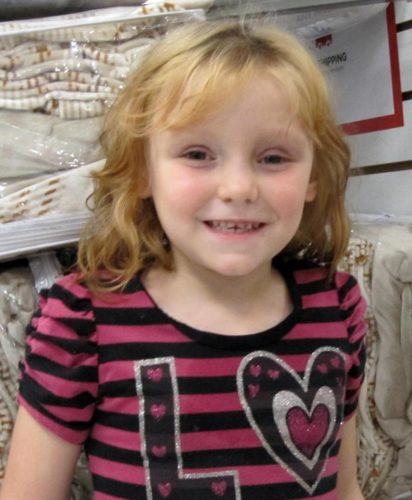All over the world, our volunteer coordinators are taking on the massive responsibility of providing for children in our program outside of our affiliated projects — and for some, that means traveling quite a long distance to give aid to them and their families at their homes.
Our volunteer coordinator, Sister Deo, at Hogar Medalla Milagrosa in Paraguay, recently drove over two hours to deliver food and clothing to some very needy families. Accompanied by a social worker, they also spoke with the families about the sponsored children’s health, emotional states, and their virtual learning assignments. Sister Deo found that all of the girls who attend the Hogar Medalla Milagrosa Girls’ Home are doing well during COVID-19 restrictions.
Sister Deo wrote Children Incorporated an email about how she is helping kids in our program thanks to donations from our COVID-19 Response Fund.
Sister Deo wrote Children Incorporated an email about how she is helping kids in our program thanks to donations to our COVID-19 Response Fund.
A message from Sister Deo
“Good Morning!
We hope you are well and that this difficult situation we are going through will soon pass. I want to share with you photos of how we are working thanks to the valuable help of Children Incorporated. We bought food that we are sending to every girl and family. We purchased books so that the girls can follow their studies remotely in a virtual way with the teachers.
We also buy much needed personal toilet items for our girls.
Thank you for the support,
Sister Deo”
About Paraguay
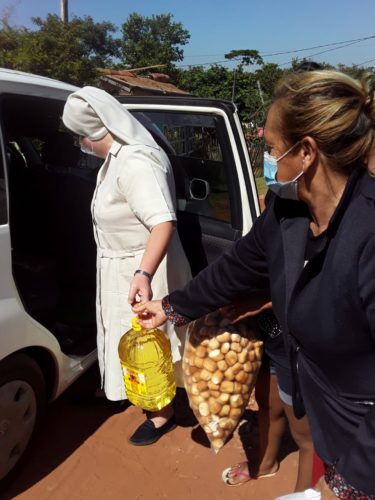
Sister Deo delivers food to families in need in Paraguay.
Nestled in the heart of South America, Paraguay comprises an area roughly the size of California and is characterized by semiarid grasslands, forested highlands, marshlands, and rivers. Paraguay boasts a well-preserved indigenous identity and heritage, but a wide range of ethnicities call this small, landlocked nation home, including immigrants from Australia, Germany, Russia, Italy, France, and Spain. Paraguay’s rich cultural diversity and wealth of natural resources, however, belie the abject poverty in which the majority of its residents live. Many areas of the country remain underdeveloped, with inhabitants relying on subsistence farming for livelihood.
Today, Paraguay is one of South America’s poorest nations and is plagued by a history of bloody wars with neighboring countries as well as internal political instability, corruption and deficient infrastructure.
Our affiliated projects
Asunción School
Asunción, Paraguay
Established by the order of St. Vincent de Paúl, the Asunción School (or, as it is known locally, Santa Luisa de Marillac) serves the impoverished children of one of Asunción’s poorest neighborhoods. Many of these children suffer from neglect and malnutrition as a direct result of their parents’ poverty. The Asunción School truly serves as a beacon of hope, providing these deserving children with the basic needs, moral guidance, and well-rounded education that may help them rise above the difficult socio-economic circumstances from which they come.
Hogar Medalla Milagrosa
Asunción, Paraguay
Just as with the Asunción School, Hogar Medalla Milagrosa was established by the order of St. Vincent de Paúl to support children of Asunción, most of whom come from the streets or from broken homes where even affording food is a daily struggle. Founded in 1895, Hogar Medalla Milagrosa serves as a primary school and a boarding home for orphaned or abandoned children. It not only strives to provide for these deserving children’s immediate, basic needs but also instills moral guidance while equipping each child with a sound education.
***
HOW DO I SPONSOR A CHILD IN Paraguay?
You can sponsor a child in Paraguay in one of three ways: call our office at 1-800-538-5381 and speak with one of our staff members; email us at sponsorship@children-inc.org; or go online to our donation portal, create an account, and search for a child in Paraguay that is available for sponsorship.

